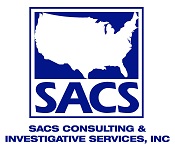Your employees have been working from home, furloughed, or laid off for months.
Now you have the green light to bring them back. Instead of relief and happiness, you are experiencing fear and aggression from some.
What is a business owner to do? Check out our tips about ways to navigate these waters carefully to reduce tensions from all parties.
Seven Ideas to Get Employees to Return to Work
First, don’t treat the situation as if it’s returning to things like they were.
We are still in a worldwide pandemic with hotspots rising and no vaccine on the horizon. Ohio has come out with many mandatory guidelines for the Responsible RestartOhio initiative to keep workers, customers, and vendors safe from the spread of COVID-19. Communicate your new plan to employees, and be sure to post all regulations on outside doorways.
Second, determine if you can have a phased return approach.
Some employees will welcome the return to a tranquil office with a set schedule, while others will question whether they need to return to the workplace at all. You might start with the individuals who volunteer to return, thus allowing greater flexibility in your plan. Doing this will also give you time to tweak your practices by gaining feedback from those who are the first to return. Above all, make sure your return to work policy is not discriminatory.
Third, be agile.
This is the perfect time to look at Key Performance Indicators (KPIs) of each employee. For those that are meeting or exceeding expectations and do not wish to return to the office, is it possible for you to leave them as remote employees? For those who need a boost in their KPIs, will returning to the office help them get back on track? Answering these questions will be critical to determine who needs to come back and who doesn’t.
Fourth, take care of their mental health.
If an employee has been back for a month or two and is still struggling with coronavirus concerns, recommend that they take advantage of your Employee Assistance Program (EAP), if you have one. As a manager, try to get to the bottom of their concern. If their fear is prohibiting them from doing their job, consider extending an unpaid leave of absence so they might seek help.
Fifth, leverage the available technology.
If COVID-19 has taught us anything, it is the ability to respond to employees and clients on a timely basis, no matter what. Consider moving all your relevant documents to the cloud, so employees are not dependent on their work desktop. Allow for the collaboration of presentations and reports. Utilize video conferencing and conference calling for meetings. Please continue to explore other technologies as they become available.
Sixth, make sure employees know if they refuse to return, they are deemed to have resigned and are no longer eligible for unemployment compensation.
Seventh, if employees are becoming aggressive, have a plan for it.
We offer Aggressive Behavior and Active Shooter Response training online or in-person for you and your staff. Also, we have plain clothes and uniform security personnel that are available 24/7 to protect your employees from harmful actions.
SACS Consulting and Investigative Services, Inc. Recommendations
As you recall workers, make sure you are communicating orally and in written form your plans to make them feel safe. Tell them about health screenings, the requirement for facial masks, availability of PPE, social distancing guidelines, increased cleaning, and ventilation practices.
This information may help ease their fears, thus curbing their resistance to return to work.
If you are still experiencing problems or need training, please give us a call at 330.255.1101 or 888.722.7937.

